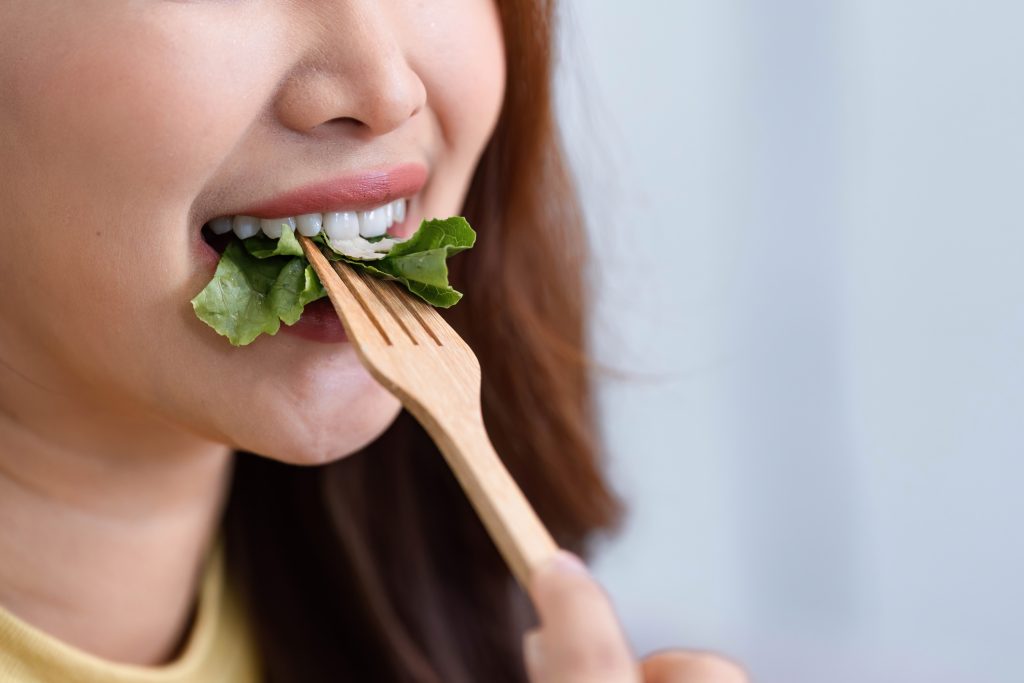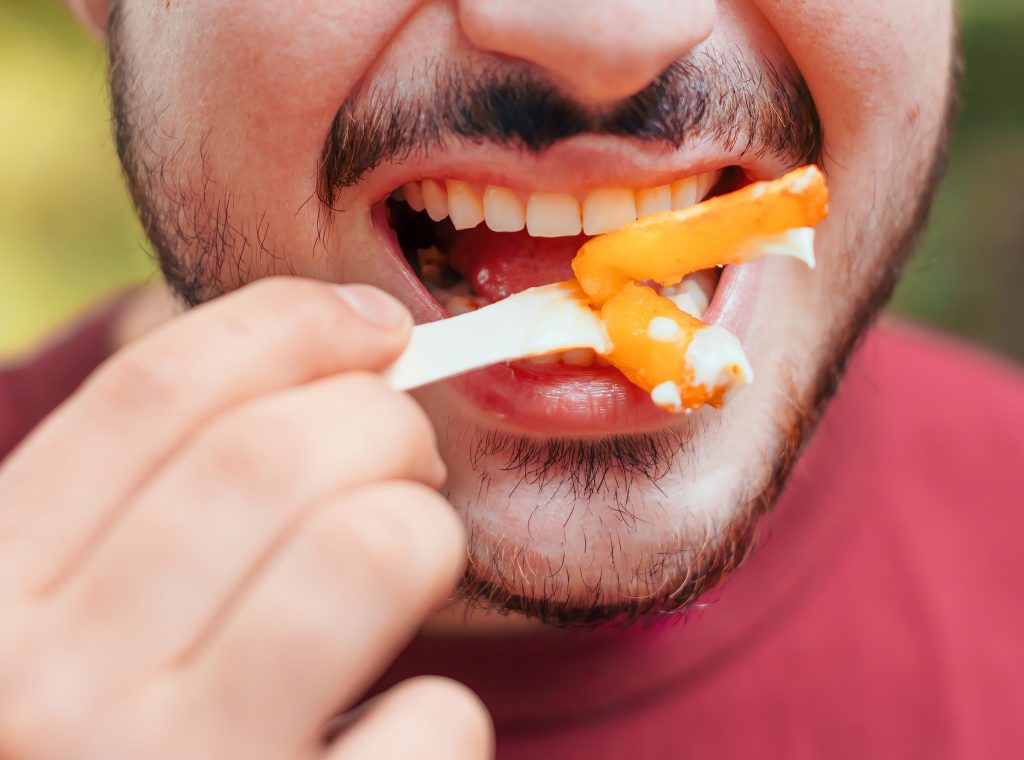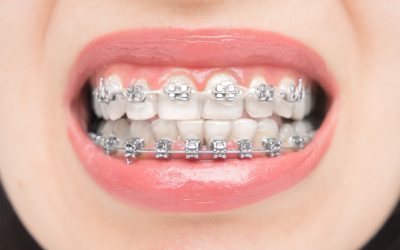September 19, 2025
Dr. Andres de Cardenas
affordable dentist offices near me, Cosmetic Dental Care Services, cosmetic dentist bonding, cosmetic dentist Miami, Daily Health Tips, dental care, Dental Care Tips, Dental Problems, dental solutions, family dental care, family dental health, first teething appearance, foods good for teeth, full mouth reconstruction, full mouth reconstruction process, healthy teeth, how dental implants are done, Oral Care, professional denstists, Secure, Smile Makeover, The Miami Cosmetic Dentist
Family Dental Care Miami | Miami Cosmetic Dentist > Blog > affordable dentist offices near me > 10 Delicious Foods That Are Surprisingly Good For Your Teeth
10 Delicious Foods That Are Surprisingly Good For Your Teeth
July 25, 2025
Dr. Andres de Cardenas
affordable dentist offices near me, all on 4 dental implants, All-on-four, Cosmetic Dental Care Services, cosmetic dentist Miami, Daily Health Tips, dental care, Dental Care Tips, dental implants, dental implants miami, dental implants pain, Dental Problems, dental solutions, family dental care, family dental health, first teething appearance, foods good for teeth, healthy teeth, how dental implants are done, Oral Care, professional denstists, Secure, Smile Makeover, The Miami Cosmetic Dentist

Last Tuesday, a first-time patient, María, slid into the chair at Dr. Andres de Cardenas, DMD clinic, with that worried look we know too well. The one that says, “Please don’t find another cavity.” As I raised the exam light, something surprising caught my eye. Her enamel was bright and strong, not what you’d expect from someone who, by her admission, “lives for snacks.”
María’s secret? She keeps a rotation of “crunchy, cheesy, and green” foods in her lunchbox instead of the usual soft drink and cookie combo. That small tweak puts her ahead of the curve, because the average American downs roughly 17 teaspoons of added sugar every single day (American Heart Association), fueling the 92 percent cavity rate among adults.
María’s check-up made one thing crystal clear that eating wisely can guard your teeth just as much as brushing. Better still, you don’t have to trade taste for health. Everyday favorites like juicy strawberries or rich salmon can shine enamel, cancel out acids, and soothe tender gums while still delivering big flavor.
 1. Cheese 🧀
1. Cheese 🧀
A mini cheeseboard lunch made of whole-grain crackers, two ounces of cheese, and raw vegetables gives you fiber to balance the fat while letting cheese do its enamel-protecting work. After an exercise session, layer cherry tomatoes, basil, and part-skim mozzarella pearls in a mason jar, add a drizzle of olive oil and a splash of balsamic, and you’ll walk away with protein, antioxidants, and gentle acidity control.
In the evening, swap a heavy cream sauce for a tablespoon of freshly grated Parmesan over steamed broccoli. The flavor stays indulgent, but the calcium boost is far kinder to your smile.
Nothing beats the moment someone places a cheese board on the table. Beyond satisfying a snack craving, cheese offers:
- Acid neutralization: Hard and semi-hard cheeses (cheddar, Gouda, Swiss) trigger an immediate surge of saliva. That extra flow dilutes the acids produced by cavity-causing bacteria within minutes of your first bite.
- Calcium and phosphate: Each cube delivers a triple-threat of calcium, phosphate, and casein. When these minerals bathe enamel, they replace the tiny crystals lost during acidic “attacks,” effectively patching micro-weak spots before they become full-blown cavities.
- A quick pH reset: Cheese has a naturally high pH (around 5.9–6.3), which helps bring your mouth back to neutral after acidic foods like citrus or tomato sauce.
Processed “cheese products” contain less calcium and often hide added sugars, so they don’t deliver the same benefits. If you watch your blood pressure, seek lower-sodium options like fresh mozzarella. For anyone sensitive to lactose, hard cheeses aged at least twelve months (think Parmesan or Manchego) contain virtually no lactose yet still strengthen enamel.
Need personalized guidance on building a smile-smart meal plan? The team at Dr. Andres de Cardenas, DMD, in Miami is ready to help you craft a diet that keeps both flavor and oral health in perfect balance.
2. Strawberries 🍓
Strawberries feel like pure indulgence, yet they quietly pull double duty for oral health. Each ruby-red berry delivers a burst of malic acid, a gentle natural astringent that can lift early surface stains the way a polishing paste does during your cleaning. Add in a solid hit of vitamin C, and you have a fruit that nourishes gum collagen while it freshens enamel.
Beyond those headline nutrients, strawberries carry polyphenols (plant compounds shown to slow the growth of plaque-forming bacteria) and plenty of water and fiber, which help sweep food particles away as you chew. Their pH is also less aggressive than citrus, so they satisfy a sweet tooth without the enamel-softening spike you’d get from soda or candy.
Flavor Forward Ways to Work Them In
- Five-Minute Salsa: Dice one cup of berries with jalapeño, cilantro, and a squeeze of lime. Spoon over grilled chicken or fish for a Florida-fresh entrée that’s naturally low in acid.
- Smoothie Booster: Blend frozen strawberries with spinach, plain yogurt, and a dash of almond milk. You’ll mask the greens, amp up calcium, and keep added sugars near zero.
- Chocolate Pairing: Dip fresh berries in a thin coat of 70 % dark chocolate. You get theobromine from the cacao plus malic acid from the fruit, a dessert that roots for your enamel.
Watch-Outs
Strawberry jams, syrups, and flavored yogurts often sneak in 20 + grams of added sugar per serving; stick with whole fruit whenever possible. If you enjoy your berries in a smoothie, sip, then rinse with water to clear any residual fruit acids.
3. Leafy Greens (Spinach, Kale, Swiss Chard) 🥬
It’s hard to beat a food group that loads so many mouth-friendly nutrients into so few calories. Spinach, kale, and Swiss chard deliver a potent blend of calcium for enamel repair, folate for healthy gum tissue, vitamin K for bone density, and magnesium to keep oral pH in check. Because these leaves are fibrous, every bite forces you to chew longer; that extra work stimulates saliva (the body’s natural rinse cycle) and loosens plaque hiding along the gumline.
Everyday Ways to Sneak More Greens onto the Plate
- Smoothie camouflage. A cup of spinach virtually disappears under frozen berries and yogurt, adding minerals without changing flavor.
- Air-fried kale chips. Lightly mist kale with olive oil, dust with smoked paprika, and crisp for eight minutes at 375 °F. They satisfy the “salty-crunch” craving without refined carbs.
- Swiss chard wraps. Blanch large leaves for 30 seconds, pat dry, then roll around tuna salad; the leafy wrap holds together better than iceberg lettuce and delivers extra calcium.
A Few Cautions and Pro Tips
Oxalates in raw spinach and kale can bind some of the calcium you’re trying to absorb. A quick steam or sauté cuts oxalate content in half while preserving most vitamins. Pairing greens with a vitamin-C source, say, strawberries, improves mineral uptake and gives your gums a collagen boost. Finally, keep an eye on bottled dressings; many pack more sugar per tablespoon than ice cream. Opt for a squeeze of citrus and a drizzle of olive oil instead.
Curious how your current diet stacks up against your smile goals? Book your next visit and let us tailor a greens-forward meal plan that keeps both enamel and taste buds happy.
4. Salmon 🐟
A single fillet of salmon delivers far more than coastal flavor. It is one of the rare foods that pairs a hefty dose of vitamin D with highly absorbable calcium and phosphorus, the very trio your enamel needs to stay dense and resilient.
Just three cooked ounces of wild sockeye supply roughly seventy percent of your daily vitamin D requirement, along with more than a thousand milligrams of omega-3 fatty acids. Those omega-3s help calm the inflammatory processes that make gums tender or prone to bleeding, while the vitamin D acts as a gatekeeper, ushering minerals into the bloodstream so weakened tooth structure can remineralize.
Wild sockeye remains the gold standard if you want dentally focused nutrition. Its deep-orange flesh signals an abundance of astaxanthin—an antioxidant that protects soft tissues as effectively as it pleases the eye. Brush a fillet with olive oil, add a sprinkle of fresh lemon zest, and grill it for five minutes on each side; the result is a meal that reinforces enamel without introducing excess sugar or starch.
When convenience trumps fresh-fish preparation, keep a few cans of pink salmon in the pantry. Because the bones are pressure-cooked until soft, each three-ounce serving supplies a bonus two hundred milligrams of calcium. Stir the flaky meat into Greek yogurt with dill and diced celery for a creamy salad that needs no mayonnaise and won’t spike blood sugar.
Cold-smoked salmon offers yet another way to boost oral health on busy mornings. Layer a few silky slices over whole-grain toast spread with avocado instead of cream cheese. You’ll enjoy concentrated omega-3s, steady energy, and none of the refined carbs that oral bacteria love.
Curious how a seafood-forward diet dovetails with gum therapy, dental implants, or other advanced treatments? The Miami team at Dr. Andres de Cardenas, DMD can tailor nutritional guidance that brings ocean-fresh benefits straight to your plate—and your smile.
5. Plain Yogurt 🍶
Few foods feel as effortless as a cup of plain yogurt. Peel back the lid and you get a cool, tangy spoonful that happens to be one of dentistry’s quiet champions. Unsweetened yogurt has a naturally low acidity, so it won’t soften enamel the way citrus or soda can. Meanwhile, its dense store of calcium and casein begins replenishing the microscopic mineral crystals that everyday wear, and the occasional sugary splurge, can dissolve.
Why plain yogurt?
- Live cultures of Lactobacillus and Bifidobacterium crowd out the bacteria that churn out enamel-eating acids.
- Calcium and casein soak into weak spots on the tooth surface, helping those areas remineralize before they turn into cavities.
- A low natural pH keeps the oral environment closer to neutral, protecting enamel after meals.
Choosing the right carton matters. Look for “plain,” “unsweetened,” or “no added sugar” on the label; fruit-on-the-bottom and dessert-flavored varieties often hide more sweetener than a glazed doughnut.
Greek styles are naturally thicker because extra whey has been strained away, giving you nearly twice the protein per serving with the same tooth-saving mineral punch. If you’re sensitive to lactose, reach for Icelandic skyr or plant-based yogurts fortified with calcium and vitamin D, both keep enamel in fighting shape without digestive drama.
Smart label checks before you buy
- Sugar: aim for 5 g per serving or less.
- Protein: 10 g or more helps keep you full and stabilizes blood sugar.
- Live cultures: look for at least two probiotic strains on the ingredient list.
Working yogurt into a busy week is easy. Swirl it into a morning smoothie instead of juice to tame the drink’s sugar load while adding a creamy texture that keeps you full until lunch. Use a dollop as a stand-in for sour cream on tacos or baked potatoes, and you’ll sidestep the excess fat that can stall gum healing.
Even weeknight marinades benefit — whisk plain yogurt with lemon zest, garlic, and herbs, coat chicken for thirty minutes, then roast; the lactic acid tenderizes meat while leaving mouth-friendly minerals intact.
6. Almonds & Other Crunchy Nuts 🌰
A small handful of almonds may look like nothing more than a quick snack, yet each kernel delivers a potent dose of tooth-loving nutrition. Because nuts are naturally low in sugar and high in minerals, they feed you—not the plaque bacteria that thrive on carbohydrates. Chewing them also sends a gentle scrub across enamel, dislodging soft debris the way a mini toothbrush would between meals.
Why dentists keep a jar of nuts on the desk
- Calcium and phosphorus repair microscopic enamel damage, hardening the outer shell of each tooth.
- Healthy fats form a thin, protective coating that slows acid penetration.
- Crunchy texture boosts saliva flow, helping to neutralize mouth acidity after coffee or soda.
- Plant proteins stabilize blood sugar, so you’re less tempted to reach for cavity-fueling sweets later.
Variety adds both flavor and extra benefits. Almonds lead the mineral pack; cashews offer a touch of iron that helps oxygenate gum tissue; pistachios supply potassium, which supports bone density in the jaw. Even walnuts have a place on the plate thanks to their plant-based omega-3s that calm inflamed gums.
You can fold nuts into almost any meal plan. Sprinkle crushed almonds over morning oatmeal in place of brown sugar, stir chopped cashews into a stir-fry instead of reaching for a sugary sauce, or blitz pistachios with herbs and lemon zest to create a bright green “crumb” that coats baked salmon. Kids who reject plain nuts often go for a homemade trail mix of almonds, air-popped popcorn, and a few dark-chocolate chips; the chocolate supplies theobromine, which, like fluoride, can reinforce enamel.
Two cautions before you crunch away, very hard whole nuts can crack weakened teeth, so patients with extensive restorations may prefer sliced or slivered versions. And while nut butters share many of the same nutrients, they cling stubbornly to enamel; always follow peanut- or almond-butter snacks with a rinse of water.
Got braces, implants, or other dental work and need snack ideas that play nice with hardware? Connect with the Miami experts at Dr. Andres de Cardenas, DMD, to build a mineral-rich menu so every crunch strengthens your smile, not stresses it.
7. Fresh Brewed Green Tea 🍵
Brewed properly and enjoyed unsweetened, green tea functions like a gentle mouth rinse. Catechins in the leaves weaken cavity-causing bacteria, trace fluoride teams up with saliva to rebuild enamel, and polyphenols make it harder for plaque to stick. Even its mild tannins freshen breath, all while the drink remains low in acid.
Steep loose-leaf or bagged tea for two to three minutes in 175 °F water, then cool or ice it if you prefer. Skip bottled versions loaded with sweeteners, and simply add a squeeze of lemon for extra vitamin C without extra sugar. Because any tea can stain porous enamel, follow each cup with a swish of plain water and wait about twenty minutes before brushing.
For guidance on pairing green tea with whitening or periodontal therapy, reach out to the Miami team at Dr. Andres de Cardenas, DMD to help you brew habits that keep every sip working in your smile’s favor.
8. Celery & Carrots 🥕
Celery sticks and crisp carrots do more than satisfy a crunch craving. Their firm fibers sweep away soft plaque with each bite, while the high water content dilutes natural sugars and triggers saliva, nature’s built-in mouthwash.
Carrots add a bonus hit of beta-carotene (vitamin A) that supports healthy enamel and gum tissue, and neither vegetable delivers the starches oral bacteria love. Swap crackers for celery topped with plain yogurt, or keep a bag of baby carrots in the car to clear coffee residue on the commute home.
If your teeth are sensitive or you wear braces, slice or lightly steam these veggies to soften the bite, and choose hummus or herb-yogurt dips instead of sugary sauces.
 9. Crisp Apples 🍎
9. Crisp Apples 🍎
Biting into a fresh apple does more than satisfy a sweet craving. The fruit’s firm, fibrous flesh scrubs away soft plaque as you chew, while its high water content dilutes natural sugars and spurs a rush of saliva that neutralizes lingering acids. Each crunchy slice also delivers a modest dose of vitamin C for healthy gums and polyphenols that slow bacterial growth along the enamel surface.
- Fibers act like tiny bristles, lifting debris from hard-to-reach grooves.
- Juicy pulp stimulates saliva, which repairs early mineral loss.
- Natural antioxidants curb the bacteria that fuel cavities and bad breath.
Keep pre-sliced apples in a lunchbox for an after-meal “rinse” when brushing isn’t possible, or pair wedges with a thin slice of sharp cheddar to double down on cavity-fighting calcium
Many of our patients with busy travel schedules rely on apples to keep their mouths feeling clean between layovers, especially after bonding or crown work that benefits from a low-plaque environment.
10. Dark Chocolate (70 % Cacao or Higher) 🍫
Dark chocolate can satisfy a sweet tooth without doing the damage you might expect from candy. When the cacao content is 70 percent or higher, the bar carries less sugar and more of a natural compound called theobromine. Theobromine helps harden enamel, giving teeth extra strength against everyday wear. Dark chocolate also brings along antioxidants that slow the growth of cavity-causing bacteria.
Quick pointers for eating chocolate
- Check the label: Aim for 70 percent cacao or above; the higher the number, the lower the sugar.
- Keep portions small: One or two squares after a meal are enough to get the benefits without overloading on calories.
- Skip sticky fillings: Caramel and nougat cling to enamel. Choose plain bars or ones studded with nuts instead.
- Rinse, don’t brush right away: A quick sip of water clears any lingering sugar. Wait about twenty minutes before brushing so softened enamel can harden.
Pair those squares with a handful of raw almonds and a glass of water, and you have a dessert that delivers minerals, healthy fats, and a lot less risk to your smile. Need more ideas for tooth-friendly snacks?
About Dr. Andres de Cardenas, DMD
Named a Top Dentist in Miami by Miami Metro Magazine, Dr. de Cardenas graduated in the top ten percent of his University of Florida College of Dentistry class and has spent more than two decades helping South Florida families smile with confidence.
We handle routine teeth cleanings to advanced cosmetic procedures, and our team also offers compassionate, cutting-edge care at 9000 SW 152 St., Suite 108, Miami, FL 33157.
Call (305) 251-3334 or request an appointment online today.
Affordable Dental Care Miami affordable dentist offices near me and Life-Changing Best Cosmetic Dentist Best Dental Center in Miami comfort and sustainability Dental Care Dental Health dental health advice Dental Problems foods good for teeth how dental implants are done pain and discomfort permanent and durable solution Secure
Get In Touch With Us
Recent Posts
- Full Mouth Reconstruction: How It Can Transform Your Smile And Oral Health
- Achieve A Bright Smile: How White Braces Are Changing The Game
- From Subtle Enhancements To Dramatic Results: Exploring Today’s Top Cosmetic Dental Treatments
- The Confidence Boost you didn’t Know you Needed: How Cosmetic Dentistry Changes Everything
- 10 Delicious Foods That Are Surprisingly Good For Your Teeth
Related articles
September 5, 2025
Dr. Andres de Cardenas
affordable dentist offices near me, Braces, braces white, Cosmetic Dental Care Services, cosmetic dentist bonding, cosmetic dentist Miami, Daily Health Tips, dental care, Dental Care Tips, Dental Problems, dental solutions, family dental care, family dental health, first teething appearance, foods good for teeth, healthy teeth, how dental implants are done, Oral Care, professional denstists, Secure, Smile Makeover, The Miami Cosmetic Dentist
Achieve A Bright Smile: How White Braces Are Changing The Game
August 22, 2025
Dr. Andres de Cardenas
advanced cosmetic dentistry, affordable dentist offices near me, Cosmetic Dental Care Services, cosmetic dentist bonding, cosmetic dentist Miami, Daily Health Tips, dental care, Dental Care Tips, Dental Problems, dental solutions, family dental care, family dental health, first teething appearance, healthy teeth, how dental implants are done, Oral Care, professional denstists, Secure, Smile Makeover, The Miami Cosmetic Dentist


